HERITAGE
Shanghai by the Bay: Asian Art Museum Exhibit
Through the mirror of its art, the Asian Art Museum’s Shanghai exhibit explores the tumultuous history of one of the world’s most dynamic and cosmopolitan cities. This exhibition features more than 130 oil paintings, Shanghai Deco furniture and rugs, revolutionary posters, works of fashion, movie clips, and contemporary installations. A Siliconeer report.
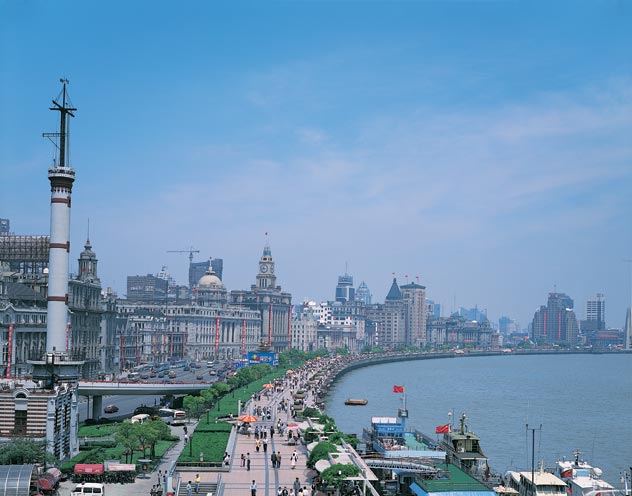
The Bund, Shanghai.
From February 12 through September 5 this year, the Asian Art Museum in San Francisco is presenting Shanghai, the first exhibition of its kind to explore the visual culture of one of the world’s most intriguing cities. Spanning the time period from Shanghai’s origins as a modest regional center to the dynamic, cosmopolitan, global powerhouse of today, the exhibition reflects upon the history of the city over the past 160 years using art as its mirror.
Drawn mainly from the collections of the Shanghai Museum, the Shanghai History Museum, the Shanghai Art Museum, the Lu Xun Memorial Hall, and the Shanghai Propaganda Poster Art Centre, the more than 130 artworks include trade oil paintings, Shanghai deco furniture and rugs, movie clips, revolutionary posters, and video and contemporary art installations.
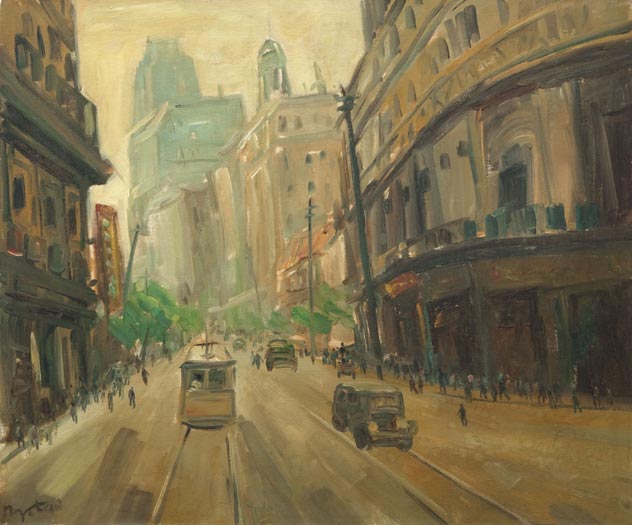
Nanjing Road, 1947. By Ni Yide (1901 1970). Oil on canvas. Private Collection.
“The 2010 World Expo that opened in May is Shanghai’s coming-out party, the official debut as the city reclaims its position as a global powerhouse,” says Jay Xu, museum director. “The Asian Art Museum’s Shanghai exhibition was timed to coincide with this prominent international event. Only through understanding its tumultuous history, can one truly understand the progressive and stylish Shanghai of today.”
“No one can deny the dynamism of Shanghai. It is a blend of old and new, East and West, cutting-edge technology and traditional values,” says Michael Knight, senior curator of Chinese art. “A case-study in globalization, Shanghai derives its unique character from its welcoming of international influences and adaptation of them to complement local values and flavor. The Shanghai exhibition examines the effects of globalization using visual art as its lens.”
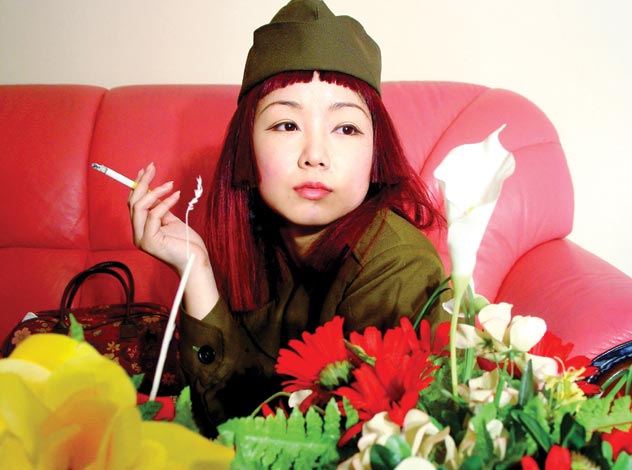
Honey, 2003. By Yang Fudong (b. 1971). Video. 9 min 29 sec. Private collection.
Shanghai is co-organized by the Shanghai Museum and the Asian Art Museum, with assistance from the Shanghai International Culture Association. The exhibition serves as the cornerstone of the Shanghai Celebration, a year-long festival hosted by a collaboration of San Francisco Bay Area cultural institutions to honor the region’s long-standing relationship with Shanghai.
“Shanghai explores, through the mirror of its art, the tumultuous history that has resulted in one of the world’s most dynamic and cosmopolitan cities,” the Asian Art Museum said in an announcement.” For more than a century Shanghai artists have not only been documenting the city’s many changes but also leading its way into the future. This exhibition features more than 130 oil paintings, Shanghai Deco furniture and rugs, revolutionary posters, works of fashion, movie clips, and contemporary installations. They are significant visual documents of the city’s rich and ever-changing culture.”
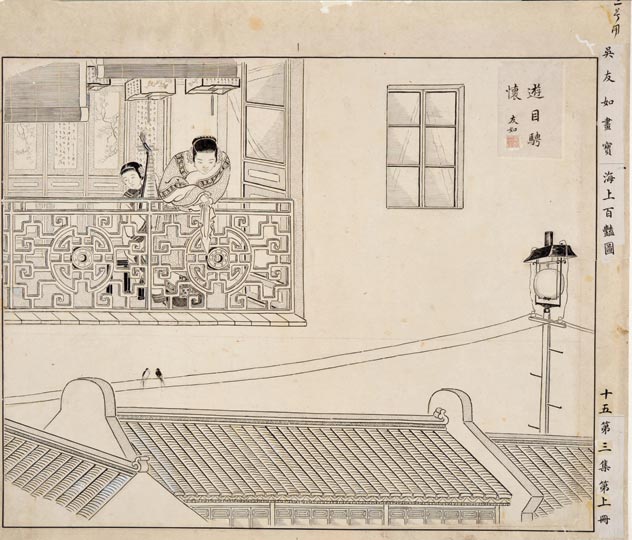
Wandering Eyes Giving Way to Wandering Thoughts, 1890s. By Wu Youru (1839 1893). Ink on paper. Collection of the Shanghai History Museum.
The Shanghai exhibition is divided into four broad sections providing an overview of the major cultural and historical developments in Shanghai: “Beginnings” (1850–1911), “High Times” (1912–1949), “Revolution” (1920–1976), and “Shanghai Today” (1980–present). “Beginnings” traces Shanghai’s rise from a modest regional center to a city of international prominence after its designation as a “Treaty Port” by Britain and China in the 1842 Treaty of Nanjing. “China Trade” oil paintings, Shanghai school paintings, and a series of lithographs present the city as the international economic hub that it became in a short time. “High Times” represents a dynamic era in Shanghai’s history, which many people consider a historic commercial and cultural height. Ink and oil paintings, posters, one-piece dresses called qipao, film clips, and Shanghai Deco furniture together capture the launching of a public romance with the city that continues today. “Revolution” highlights a collection of propaganda posters and woodcuts that document the changing landscape of Shanghai during the Communist reaction against the excesses of the “High Times” period. Other artworks in this section include woodblock prints from the 1930s and 1940s— among the earliest works to express the social criticism that would later lead to the revolution — and ink and oil paintings. “Shanghai Today” presents the visual culture that is emerging as the city reclaims its role as a leading center of global trade and finance. Prints, paintings, and video and installation art demonstrate the assurance with which Shanghai artists have reentered the global art scene with the removal of many of the restrictions of the “Revolution” period.
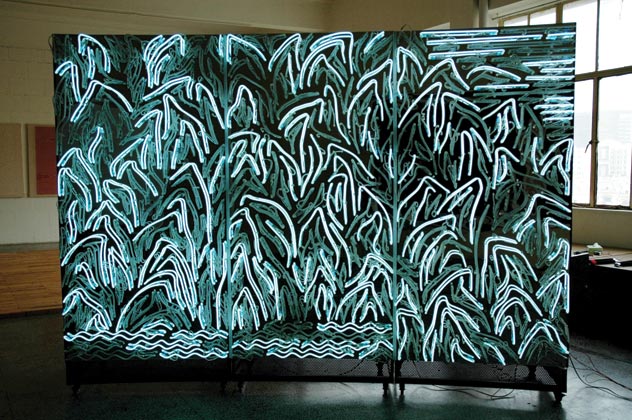
Landscape Commemorating Huang Binhong Scroll, 2007. By Shen Fan (b. 1952). Installation with lights and sound. Courtesy of the artist.
The Asian Art Museum—Chong-Moon Lee Center for Asian Art and Culture is a public institution whose mission is to lead a diverse global audience in discovering the unique material, aesthetic, and intellectual achievements of Asian art and culture. Holding more than 17,000 Asian art treasures spanning 6,000 years of history, the Asian Art Museum is one of the largest museums in the Western world devoted exclusively to Asian art.
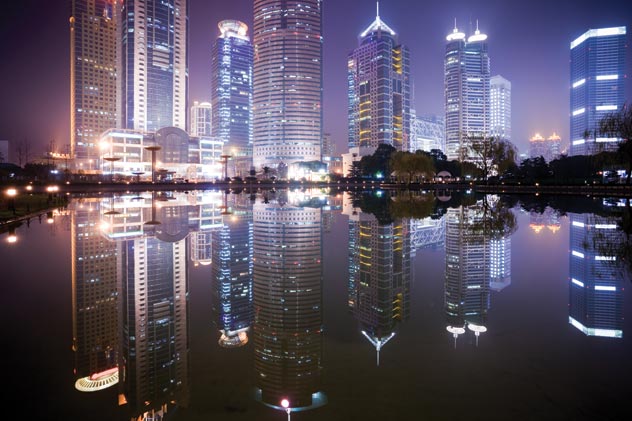
Night view of Shanghai.
Information: (415) 581-3500 or www.asianart.org.
|